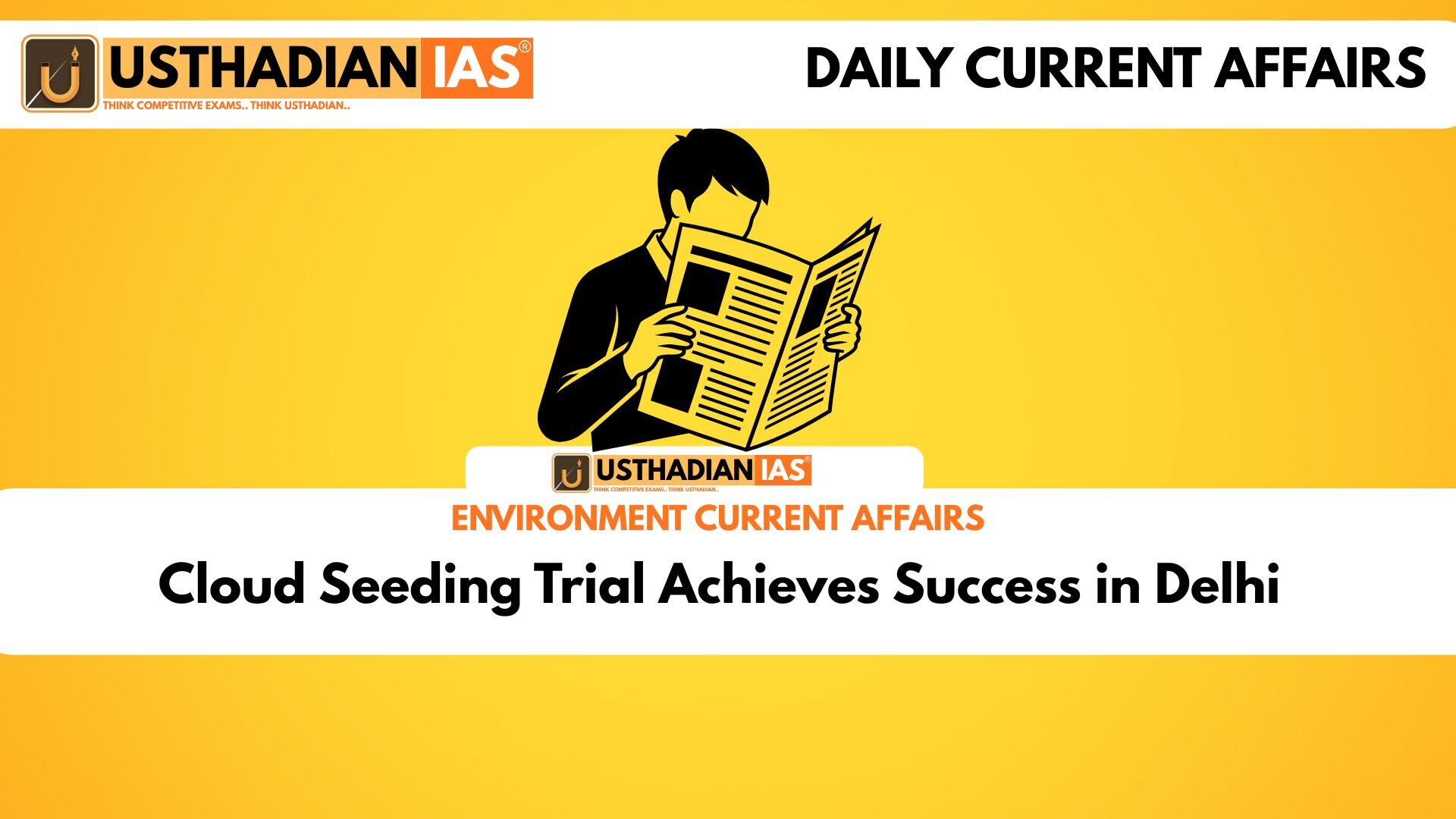About Cloud Seeding
Cloud Seeding Trial Achieves Success in Delhi: Cloud seeding is a weather modification technique designed to enhance a cloud’s ability to produce rain or snow. It does not create clouds but works on existing natural clouds. The process introduces tiny ice nuclei into clouds to facilitate precipitation.
Working Mechanism
The nuclei are dispersed either by aircraft or ground-based generators, forming a base for snowflakes to develop. These snowflakes grow rapidly and fall to the ground as rain or snow. Seeding agents include Silver Iodide (AgI), potassium iodide, sulfur dioxide, and frozen carbon dioxide (dry ice).
Static GK fact: Silver Iodide has been used in cloud seeding programs globally since the 1940s due to its strong ice-nucleating properties.
Benefits of Cloud Seeding
Cloud seeding provides multiple advantages. It can help combat pollution by facilitating rainfall that clears particulate matter from the air. Additionally, it aids in enhancing winter snowfall and mountain snowpack, supplementing water supply for surrounding communities.
Static GK Tip: Countries like China, the USA, and UAE have operational cloud seeding programs to manage water scarcity and agricultural needs.
Concerns and Challenges
Despite its promise, cloud seeding faces challenges. Lack of reliable information can reduce operational effectiveness, making the return on investment uncertain. The commonly used Silver Iodide may pose toxicity risks to terrestrial and aquatic life, prompting research into safer alternatives. Environmental risks include the possibility of intense rainfall, which may trigger floods, damaging infrastructure, crops, and livelihoods.
Ethical and Scientific Considerations
Implementing cloud seeding requires thorough research to balance benefits against health and environmental risks. The technique raises ethical questions regarding human intervention in natural weather systems. Proper monitoring and risk assessment are crucial for responsible deployment.
Static GK fact: Cloud seeding is categorized under geoengineering techniques, which aim to deliberately modify natural processes for human benefit.
Future Outlook
The trial conducted by IIT Kanpur in Delhi marks a potential step toward the city’s first artificial rain. If favorable weather conditions persist, artificial precipitation could provide relief from urban pollution and water shortages. Continuous research and risk mitigation strategies will determine the long-term feasibility of cloud seeding initiatives in India.
Static Usthadian Current Affairs Table
Cloud Seeding Trial Achieves Success in Delhi:
| Topic | Detail |
| Event | Cloud Seeding trial conducted in Delhi |
| Organization | IIT Kanpur |
| Objective | Enhance precipitation and combat pollution |
| Seeding Agents | Silver Iodide, Potassium Iodide, Sulfur Dioxide, Dry Ice |
| Benefits | Pollution control, Snowpack enhancement, Water supply support |
| Environmental Concerns | Toxicity risks, Floods, Infrastructure damage |
| Ethical Considerations | Human intervention in weather, Health risk assessment |
| Global Usage | China, USA, UAE cloud seeding programs |
| Future Impact | Potential artificial rain in Delhi, Supplement water resources |
| Research Focus | Safer alternatives, Operational efficiency, Risk mitigation |








